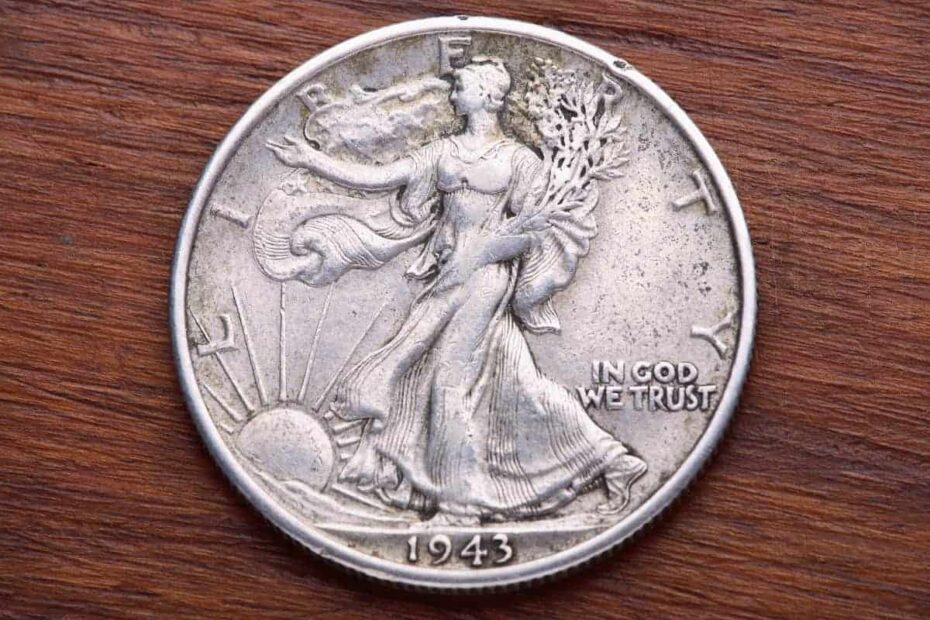Whispers of Silver: A Coin‘s Silent Story
Imagine holding a piece of history that fits perfectly in the palm of your hand. The 1943 Half Dollar isn‘t just a coin – it‘s a metallic time capsule that captures the spirit of America during one of its most challenging moments. As a seasoned numismatist with decades of collecting experience, I‘ve learned that every coin tells a story, and this particular half dollar speaks volumes about resilience, craftsmanship, and national determination.
The World Behind the Coin
When you trace the origins of the 1943 Half Dollar, you‘re not just examining a piece of currency – you‘re exploring a pivotal moment in American history. The year 1943 was more than a date; it was a testament to national unity during World War II. While young Americans were fighting across distant battlefields, the U.S. Mint was engaged in its own critical mission: producing coins that would become historical artifacts.
The Walking Liberty Design: More Than Just Aesthetics
Adolph A. Weinman‘s design wasn‘t merely an artistic choice – it was a powerful visual narrative. The Walking Liberty represented hope, movement, and the forward momentum of a nation in transition. Her flowing dress, the determined stride, and the symbolic elements of oak and laurel branches weren‘t just decorative – they were a visual manifesto of American spirit.
The Metallurgical Marvel of Wartime Coinage
During World War II, metal became a strategic resource. Every ounce of silver and copper was carefully allocated, making the 1943 Half Dollar a remarkable engineering achievement. The coin‘s composition – 90% silver and 10% copper – wasn‘t just a technical specification, but a reflection of national resource management.
Minting Challenges of 1943
Producing coins during wartime presented unique challenges. The U.S. Mint had to balance precision manufacturing with resource conservation. Each mint location – Philadelphia, Denver, and San Francisco – operated under extraordinary pressures, producing millions of coins while supporting the war effort.
A Collector‘s Perspective: Beyond Monetary Value
When I first started collecting, experienced numismatists taught me that a coin‘s value extends far beyond its market price. The 1943 Half Dollar embodies this philosophy perfectly. Its worth isn‘t just measured in dollars, but in historical significance, artistic merit, and the stories it carries.
Rarity and Condition: The Collector‘s Holy Grail
Not all 1943 Half Dollars are created equal. A pristine specimen can command astronomical prices. I‘ve witnessed coins in MS68 condition selling for [up to $125,000], transforming what seems like ordinary currency into a treasure worthy of museum display.
The Economic Landscape of 1943
Understanding the coin requires understanding its economic context. 1943 was a year of massive industrial transformation. The United States was transitioning from a peacetime economy to a war production powerhouse. Coin production reflected this shift – each half dollar represented not just currency, but a symbol of national productivity.
Mint Mark Mysteries
Collectors know that mint marks tell their own stories. The Philadelphia (no mint mark), Denver (D), and San Francisco (S) mint marks each represent different production environments and potential rarities. A keen eye can spot subtle variations that dramatically impact a coin‘s collectible value.
Preservation: An Art Form in Itself
Preserving a 1943 Half Dollar isn‘t just about maintaining its physical condition – it‘s about protecting a piece of history. Proper storage involves understanding humidity, temperature, and handling techniques that prevent degradation.
Technical Preservation Insights
- Use non-reactive holders
- Maintain consistent temperature
- Avoid direct handling
- Store away from direct sunlight
- Use professional-grade archival materials
Market Dynamics and Investment Potential
The numismatic market is complex and ever-changing. While some view coins as mere collectibles, sophisticated investors understand their potential as alternative assets. The 1943 Half Dollar represents a fascinating intersection of historical significance and potential financial appreciation.
Investment Considerations
Factors influencing value include:
- Overall coin condition
- Mint mark rarity
- Historical significance
- Silver content
- Market demand from collectors
Personal Connection: Why We Collect
Collecting coins isn‘t just about acquisition – it‘s about connection. Each 1943 Half Dollar carries the energy of its time, the hands that minted it, and the economic realities of a world at war.
Conclusion: A Living Piece of History
The 1943 Half Dollar transcends its metallic composition. It‘s a narrative, a memory, a testament to human creativity and resilience. Whether you‘re a seasoned collector or a curious enthusiast, this coin offers a tangible link to a remarkable period of American history.
Remember, in the world of numismatics, every coin has a story – and the 1943 Half Dollar‘s story is waiting for you to discover.
